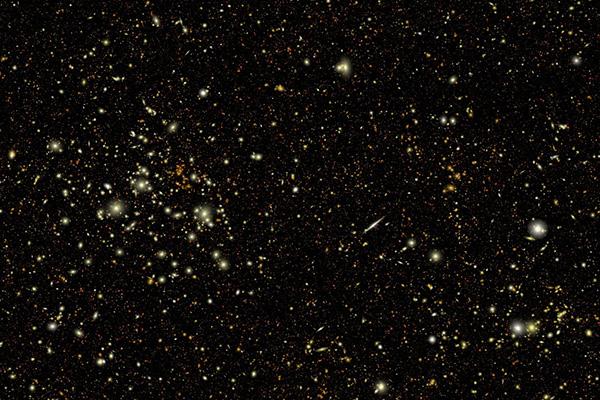Roman Space Telescope and Rubin Observatory scientists collaborate on a giant testbed of simulated galaxies

“Theories of cosmic structure formation make predictions for how the seed fluctuations in the early universe grow into the distribution of matter that can be seen through gravitational lensing,” said Chris Hirata
The synthetic galaxy catalog will help test Roman's capabilities and foster collaboration with the Rubin project. Scientists have created a gargantuan synthetic survey that shows some of what we can expect from NASA's Nancy Grace Roman Space Telescope, slated to launch in the mid-2020s, and the Vera C. Rubin Observatory's Legacy Survey of Space and Time (LSST), funded by the National Science Foundation and the Department of Energy. Though it represents just a small chunk of the real future surveys, this simulated version contains a staggering number of galaxies – 33 million of them, along with 200,000 foreground stars in our home galaxy.
The team drew data from a mock universe originally developed to support science planning with the Vera C. Rubin Observatory, which is located in Chile and set to begin full operations in 2024, and the Rubin/LSST Dark Energy Science Collaboration. Because the Roman and Rubin/LSST simulations use the same source data, astronomers can compare them and see what they can expect to learn from pairing the telescopes’ observations once they’re both actively scanning the universe.
The work put in now will also help both teams make the most of the data they collect in the future. "The idea there was to use the same simulated data, so that downstream we can foster more collaboration," said James Chiang, a lead scientist at the Department of Energy's SLAC National Accelerator Laboratory and a researcher on the project. "I'm excited to work with everyone and see things come together."
Read more here.
